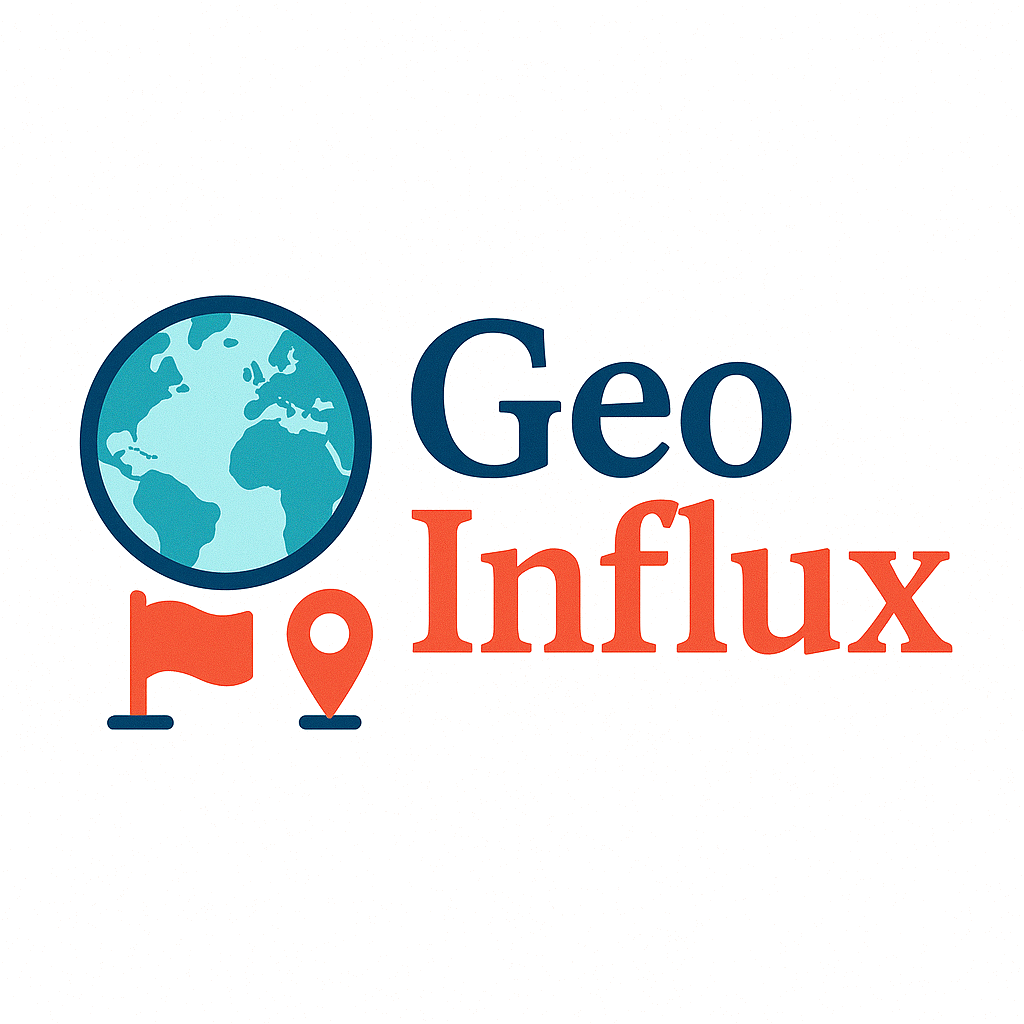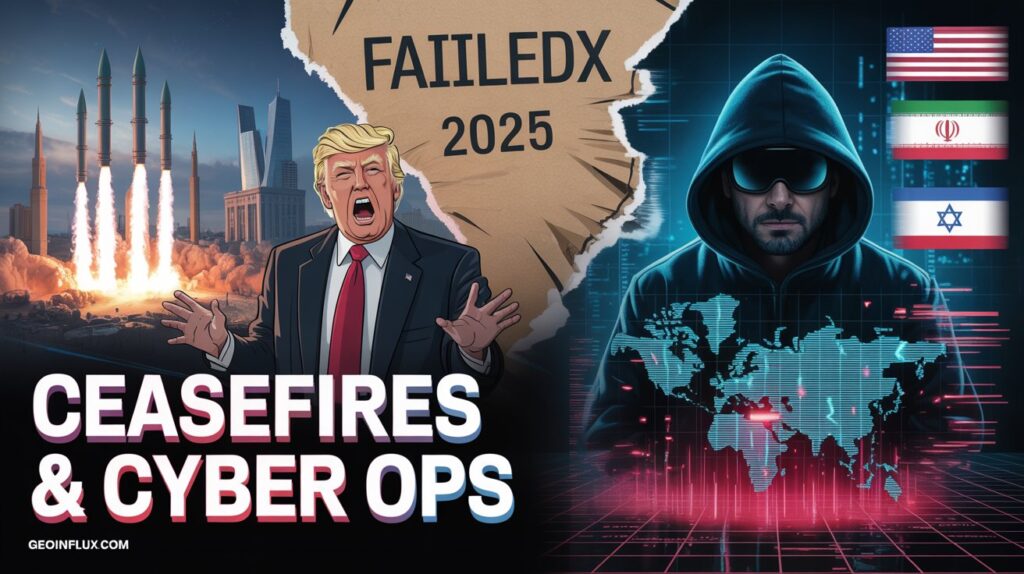Explore 2025’s geopolitics—from fragile Israel–Iran ceasefires to cyber operations and AI‑driven warfare. Read key developments, global risks, and what comes next.
🌍 Introduction: Ceasefires, Cyber Ops & a New Global Order
2025 geopolitics has entered uncharted territory. After a tentative ceasefire brokered by Trump, Israel–Iran tensions remain volatile (gsdn.live). Simultaneously, cyber operations—from Iran’s influence campaigns to NATO’s digital defenses—are shaping state conflicts. The result? A hybrid battleground where diplomacy and data collide.
🕊️ Israel–Iran Ceasefire 2025: Fragile Peace Under Pressure
Israel–Iran ceasefire 2025
A 12-day war brought US‑led strikes on Iran’s nuclear sites and rigorous aerial duels. Trump announced a ceasefire, but missile exchanges continued (thetimes.co.uk). Analysts dub it a diplomatic victory, yet warn the truce lacks enforcement and may unravel (theaustralian.com.au).
⚔️ Iran’s Leverage: Strait Threats & Proxy Warfare Post‑Ceasefire
Iran threats Strait Hormuz
Despite the ceasefire, Iran retains multiple escalation options:
- Disruption at the Strait of Hormuz using naval mines and drones (businessinsider.com).
- Launch missile attacks on US bases in Qatar and beyond (businessinsider.com).
- Mobilize proxy groups like Hezbollah and the Houthis (businessinsider.com).
💻 Cyber Ops Rise: Iran Hacks, NATO Defenses & AI Escalation
geopolitics cyber operations 2025
The post-ceasefire era sees cyber warfare intensifying. Iran-backed hackers targeted U.S. campaigns and Israeli infrastructure (researchcentre.trtworld.com). NATO is reinforcing cyber defenses on its eastern flank (gsdn.live). AI-enhanced cyberattacks—MAICAs—threaten critical systems (arxiv.org).
🧭 Trump’s Role: From Ceasefire Architect to Cyber Strategist
Trump cyber geopolitics 2025
Trump’s strategic pivot includes:
- Securing a ceasefire in the “12-Day War” (thetimes.co.uk, apnews.com).
- Advocating for regime change via nuclear diplomacy slogans like “Make Iran Great Again” (en.wikipedia.org).
- Pressing Gulf allies to revive nuclear talks and end Tehran’s proxy networks .
- Framing NATO talks on cyber cooperation as part of his new global order.
🔮 Global Risks & Ramifications in 2025
2025 geopolitics risks
1. NATO Escalation Threat
If US forces are hit, NATO may trigger Article 5, expanding the conflict (businessinsider.com, apnews.com).
2. Proxy Warfare Surge
Oil markets are vulnerable if Iran targets the Strait. Proxy groups could ignite secondary conflicts across the Middle East (businessinsider.com).
3. Tech Cold War
Cyber operations—driven by AI agents and quantum hacking—shape power dynamics. The US, China, Russia, and Iran leapfrog in the cyber arms race .
4. Strategic Asian Risk Zones
India-Pakistan ceasefire tensions and NATO cyber concerns parallel Middle East unrest (en.wikipedia.org).
📌 Summary Recap: Key Trends in 2025 Geopolitics
| Trend | Insight |
|---|---|
| Israel–Iran ceasefire | Fragile, yet diplomatically significant |
| Iran’s leverage | Strait disruption, proxy mobilization |
| Cyber ops surge | Iran hacks, NATO digital countermeasures |
| Trump’s pivot | Ceasefire + cyber dominance theme |
| Global risks | NATO Article 5, oil markets, cyber cold war |
| Regional echo | South Asia ceases, hybrid threats intensify |
🧠 Final Insight: The New Geopolitical Frontier
2025’s geopolitical landscape is defined by hybridity—military operations entwined with cyber and digital influence. States wield missiles and algorithms alike. The future lies in mastering both domains: hard power and coded warfare. Stay alert—this frontier demands strategic vision and digital resilience.
📚 References
- Iran’s post-ceasefire leverage (theaustralian.com.au, businessinsider.com)
- Trump brokers ceasefire & nuclear talks





